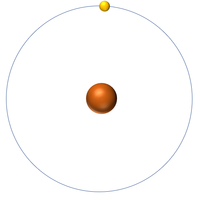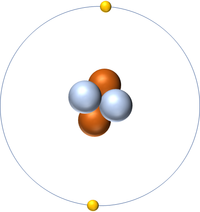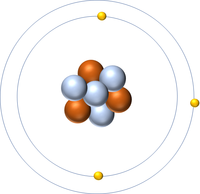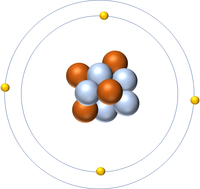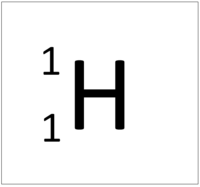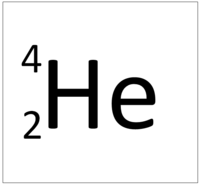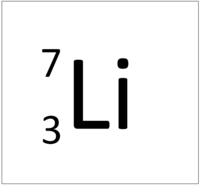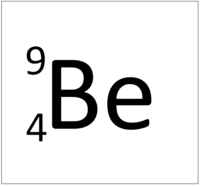Difference between revisions of "Relative Atomic Mass"
(→Meaning) |
|||
| Line 37: | Line 37: | ||
[[File:ElementTile.png|right|400px|thumb|An [[element]] tile showing the '''mass number'''.]] | [[File:ElementTile.png|right|400px|thumb|An [[element]] tile showing the '''mass number'''.]] | ||
The '''relative atomic mass''' or '''mass number''' of an [[element]] is the number of [[nucleon]]s ([[proton]]s + [[neutron]]s) in an [[atom]]. | The '''relative atomic mass''' or '''mass number''' of an [[element]] is the number of [[nucleon]]s ([[proton]]s + [[neutron]]s) in an [[atom]]. | ||
| + | |||
The '''relative atomic mass''' in [[gram]]s is also the [[mass]] of one [[mole]] or [[Avagadro Constant|6.02x10<sup>23</sup>]] [[atom]]s of the [[element]]. | The '''relative atomic mass''' in [[gram]]s is also the [[mass]] of one [[mole]] or [[Avagadro Constant|6.02x10<sup>23</sup>]] [[atom]]s of the [[element]]. | ||
Revision as of 18:55, 2 January 2019
Contents
Key Stage 3
Meaning
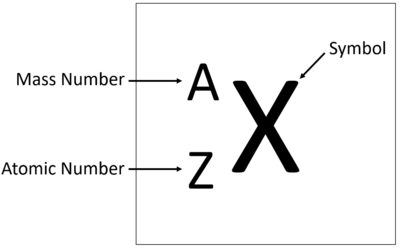
An element tile showing the mass number.
The Atomic Mass or mass number is the number of nucleons (protons + neutrons) in an atom.
About The Atomic Mass
- Two atoms of the same element may have the same Atomic Number but a different Atomic Mass depending on the number of neutrons in the nucleus. Elements with different mass numbers are called isotopes.
- The atomic mass is not affected by the number of electrons.
- Only the particles in the nucleus affect the atomic mass.
Examples
| Hydrogen | Helium | Lithium | Beryllium |
| Hydrogen has one nucleon so it has an atomic mass of 1. | Helium has four nucleons so it has an atomic mass of 4. | Lithium has seven nucleons so it has an atomic mass of 7. | Beryllium has nine nucleons so it has an atomic mass of 9. |
Key Stage 3
Meaning

An element tile showing the mass number.
The relative atomic mass or mass number of an element is the number of nucleons (protons + neutrons) in an atom.
The relative atomic mass in grams is also the mass of one mole or 6.02x1023 atoms of the element.
About Relative Atomic Mass
- The relative atomic mass in grams on the Periodic Table tells the mass of a mole of the element.
- A mole of the element is 6.02x1023 atoms of that element.
- Two atoms of the same element may have the same Atomic Number but a different Relative Atomic Mass depending on the number of neutrons in the nucleus. Elements with different mass numbers are called isotopes.
- The relative atomic mass is not affected by the number of electrons.
- Only the particles in the nucleus affect the relative atomic mass.
Examples
| Hydrogen | Helium | Lithium | Beryllium |
| Hydrogen has one nucleon so it has an atomic mass of 1 and 6.02x1023 (or 1 mole of) atoms of Hydrogen have a mass of 1g. | Helium has four nucleons so it has an atomic mass of 4 and 6.02x1023 (or 1 mole of) atoms of Helium have a mass of 4g. | Lithium has seven nucleons so it has an atomic mass of 7 and 6.02x1023 (or 1 mole of) atoms of Lithium have a mass of 7g. | Beryllium has nine nucleons so it has an atomic mass of 9 and 6.02x1023 (or 1 mole of) atoms of Beryllium have a mass of 9g. |
